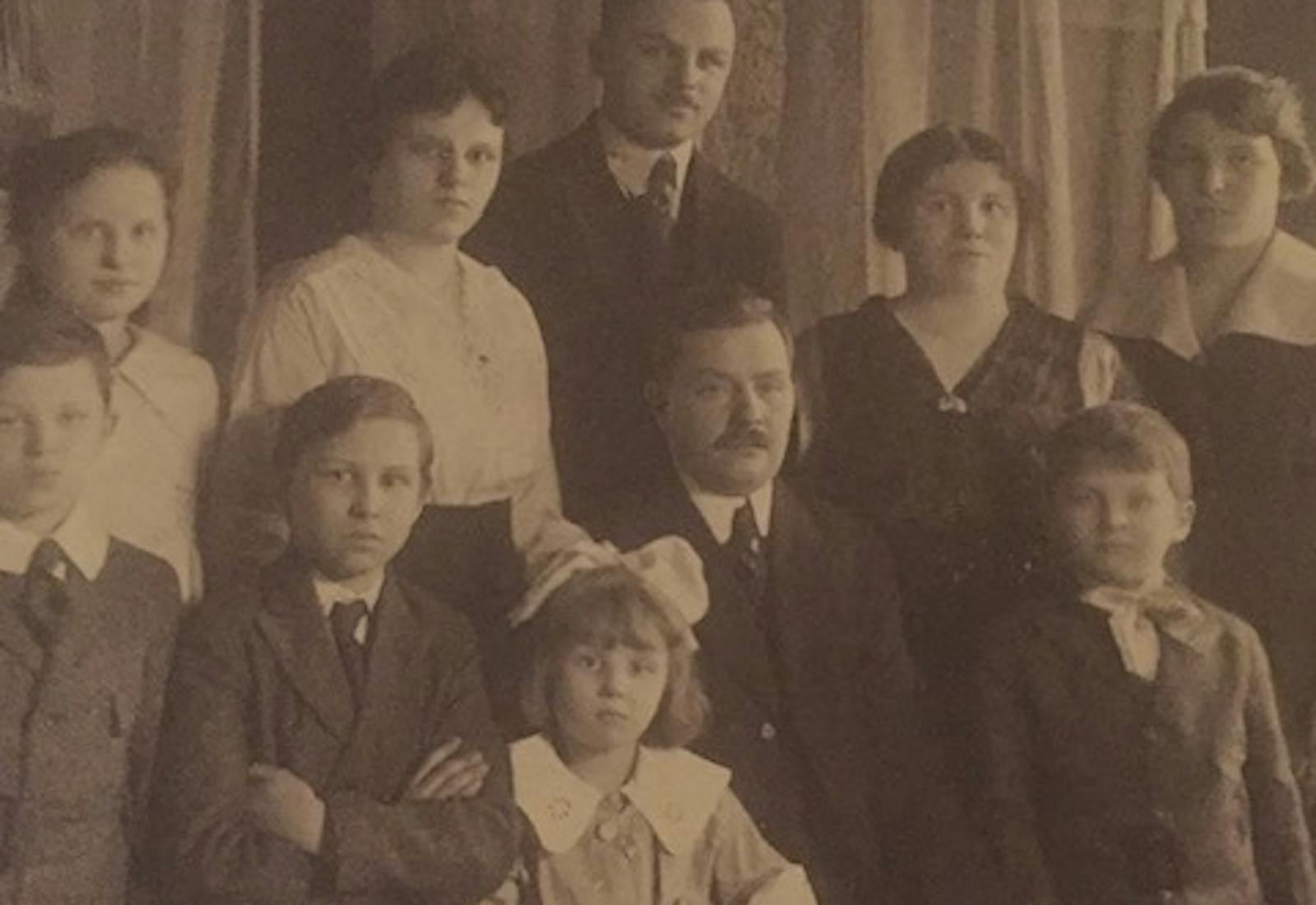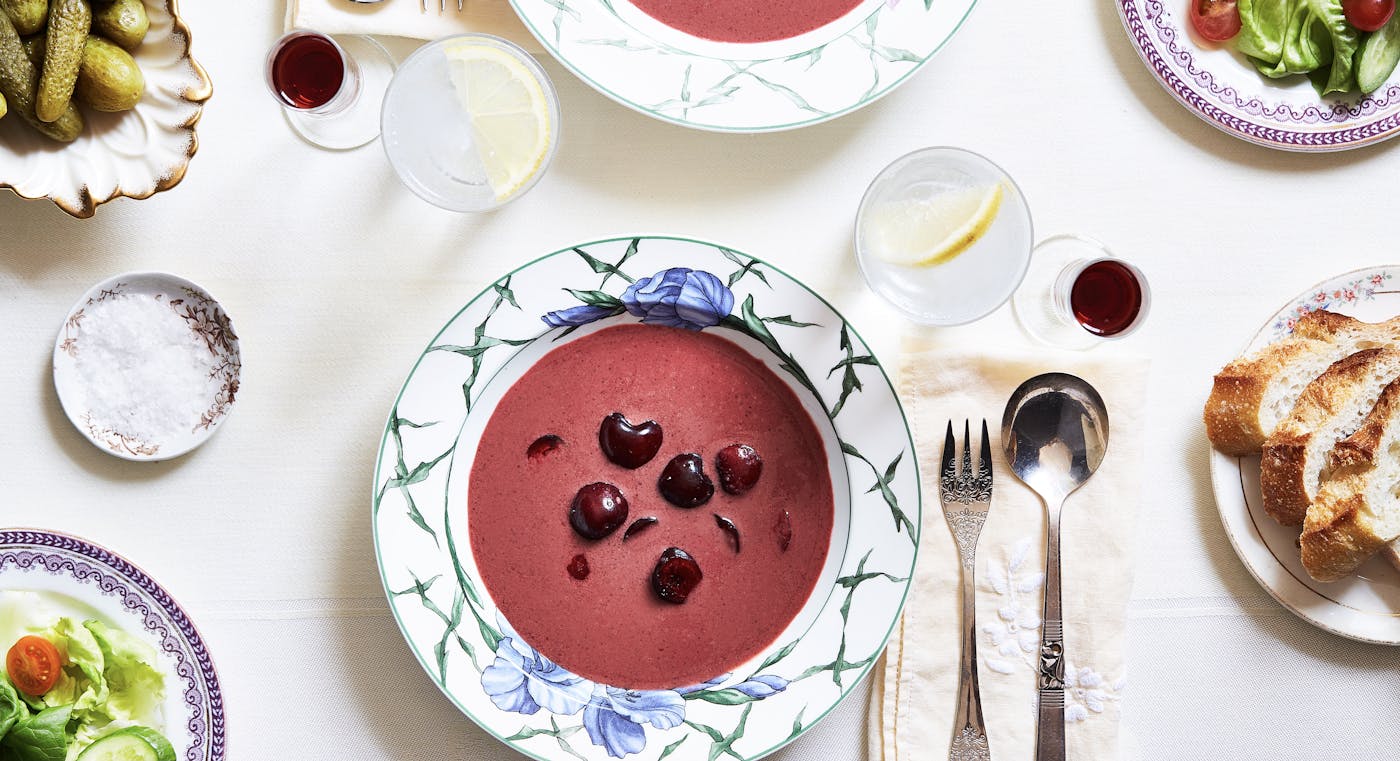Shared by Caroline Schiff


“The story is really about the women,” says Caroline Schiff, Executive Pastry Chef at Gage & Tollner in Brooklyn. Specifically, it’s about the Schiff women from Caroline’s maternal lineage, starting with her great-grandmother Ann Schiff (née Cohen), who grew up in the Bed-Stuy neighborhood of Brooklyn. Though Ann passed away before Caroline was able to meet her, Caroline’s mother Robin always says they’re kindred spirits; and along with her mother, Ivy, Caroline has gotten to know Ann well through stories.
“She was all about food, and having people over and making too much of everything,” Caroline recounts. “If it was just you coming over for lunch, there was enough food for 10 people… I inherited a lot of her things. And it's all the beautiful plates and textiles and furniture. She was very generous in how she entertained and fed people.”
Ann was born in 1906 in Brooklyn, to parents who emigrated to the US from Germany sometime prior. The Schiffs don’t have much specific information on the Cohen family, but documented history shows that German immigration to the US was continuous throughout the 19th century, reaching an apex in the 1880s. Ann remained in Bed-Stuy through young adulthood and eventually met Irwin Schiff, whom she would marry.
Irwin was born in 1899 to Haskel Schiff and Mollie Hofflich. Haskel moved to New York’s Lower East Side a decade prior, where he owned a butcher shop. The business and family eventually moved to Bed-Stuy (perhaps a clue to how Ann and Irwin met, though the family does not know the details). In 1928, Ann and Irwin’s son Robert was born. Robert worked as an actuary and remained in Brooklyn, where he met his wife Ivy Graber. The Grabers, who came from Russia and Poland, were yet another European-Jewish family that emigrated to Brooklyn and stayed put—they settled in Sheepshead Bay. Ivy worked as a teacher in the New York City Public School system, and raised four children, the eldest being Robin, Caroline’s mother. Robin, Ivy, and Ann remained close throughout Robin’s childhood, even when Ann moved to Florida later in life.
“[Ann] wanted people around and she wanted to nurture. And I can relate to that a lot.” Caroline observes. Indeed, as a professional chef, much of Caroline’s work has to do with feeding her community. Through this work she’s found an ability to connect more deeply with her roots. “The thing about Judaism that I love is that we tell stories through food. And we have so much symbolism in our food, and each holiday has the foods you eat or the foods you don't eat, or the certain dishes that tell the story or represent something.”
Ann’s home cooking reflected this admiration for faith and food as well. But she grew to care less for the religious rules, focusing more on the joy of cooking and entertaining. Case in point: She served lobster on more than one occasion, to the disbelief of Ivy and Robin, who mostly kept kosher. Still, there were some Jewish culinary traditions she never shook, one standout being a cold fruit soup.
“It was like the stuff of legends,” Caroline shares. “When I first heard about it, I was like, ‘wait, fruit soup, what?’ But once you do just a little bit of research, it's a very Hungarian Jewish thing…especially with cherries and plums.” While visually similar to borscht, in the Central European culinary tradition the soup is often quite sweet, and more like a thinned compote than a savory dish.
Robin and Ivy would go to Ann’s house for lunch in the summer, “and you'd open the fridge and there would just be jars and jars and jars of this pink soup.” Ann never made it the same way twice, but the soup always had that vibrant magenta hue and a dollop of sour cream—and it was always served as part of the main meal, not dessert.
Since Ann’s recipe wasn’t formally recorded, Caroline adapted a version based on her mother’s recollection—with a few adjustments to make the soup even more enticing to the 21st Century eater. It feels significant to Caroline to take on the responsibility of preserving something so special to her mother and grandmother: “If you have these recipes that have just been made and never written down, we take it for granted. But it's important to start recording these things,” she says.
She adds that it feels especially important not only to write down and save family recipes, but to actually cook them. Even if making some personal tweaks, a dish—and its historical significance—is so much more likely to stay relevant when it’s eaten. “In my mind, it's one of the biggest things about Judaism,” says Caroline “We use food as such a tool to express ourselves.”

